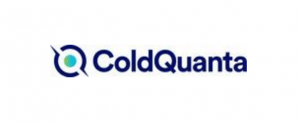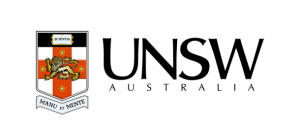Quantum Tech Briefs June 23: ColdQuanta and LocatorX partner to build atomic clocks, first-ever quantum circuit, next generation of IBM’s quantum computers & MORE from London & Chicago

Quantum News Briefs today opens with the announcement that ColdQuanta and LocatorX are partnering to build next generation atomic clocks followed by an introduction to the First-Ever Quantum Circuit, what Michelle Simmons has called the “most exciting discovery of her career. A brief outlining IBM’s Next Generation of Quantum Computers is next followed by news from UofChicago’s Polsky Center announcing a new cohort of innovative startups that include quantum tech companies, and the launch of BT and Toshiba’s test trial of the world’s first commercial quantum secured metro network.
ColdQuanta and LocatorX Partner to Build Next Generation of Atomic Clocks
 ColdQuanta has announced a partnership with LocatorX, a ground-breaking location tracking company, to advance the development of atomic clocks. The strategic partnership will enable the companies to jointly address an expanded range of atomic clock applications through the combination of ColdQuanta’s world class team and technology, and LocatorX’s affordable, small form factor, low power atomic clocks.
ColdQuanta has announced a partnership with LocatorX, a ground-breaking location tracking company, to advance the development of atomic clocks. The strategic partnership will enable the companies to jointly address an expanded range of atomic clock applications through the combination of ColdQuanta’s world class team and technology, and LocatorX’s affordable, small form factor, low power atomic clocks.
Under the agreement, ColdQuanta’s technical talent will assist LocatorX in the final stages of development of the Solid-state Miniature Atomic Clock (SMAC) that LocatorX licensed from the University of Oxford. The market for LocatorX’s compact SMAC will be further expanded when networked with ColdQuanta’s clock technology. The device will provide a high value solution to address common challenges such as clock drift, jamming resistance, radio silence management, signal acquisition speed and a reduction in code validity interval.
“We are in a period where global instabilities are accelerating the demand for highly accurate atomic clocks that can be used across a wide variety of critical applications,” said Chester Kennedy, ColdQuanta’s President, Research and Security Solutions.
“The heart of the new technology is a miraculous molecule in which a single atom is incarcerated within a carbon cage. This enables the rich quantum properties of the atom to be harnessed in the solid state,” said Professor Andrew Briggs, Chief Innovation Officer at LocatorX.
*****
The First-Ever Quantum Circuit
 Australian scientists have created the world’s first-ever quantum computer circuit – one that contains all the essential components found on a classical computer chip but at the quantum scale.
Australian scientists have created the world’s first-ever quantum computer circuit – one that contains all the essential components found on a classical computer chip but at the quantum scale.
“This is the most exciting discovery of my career,” senior author and quantum physicist Michelle Simmons, founder of Silicon Quantum Computing and director of the Center of Excellence for Quantum Computation and Communication Technology at UNSW.
Not only did Simmons and her team create what’s essentially a functional quantum processor, they also successfully tested it by modeling a small molecule in which each atom has multiple quantum states – something a traditional computer would struggle to achieve. To make this leap in quantum computing, the researchers used a scanning tunneling microscope in an ultra-high vacuum to place quantum dots with sub-nanometer precision. The placement of each quantum dot needed to be just right so the circuit could mimic how electrons hop along a string of single- and double-bonded carbons in a polyacetylene molecule.
Simmons says the achievement of moving from quantum transistor to circuit in just nine years is mimicking the roadmap set by the inventors of classical computers. The first classical computer transistor was created in 1947. The first integrated circuit was built in 1958. Those two inventions were 11 years apart; Simmons’ team made that leap two years ahead of schedule.
*****
The Next Generation Of IBM Quantum Computers
IBM Quantum computers. He first wrote about IBM’s plans to improve access to its quantum computers. This second article describes the update to IBM’s Quantum computing roadmap as revealed by Darío Gil, Senior Vice President, Director of Research at IBM Think in June.
IBM is building accessible, scalable quantum computing by focusing on three pillars:
· Increasing qubit counts
· Developing advanced quantum software that can abstract away infrastructure complexity and orchestrate quantum programs
· Growing an ecosystem of quantum-ready enterprises, organizations, and communities
IBM originally announced its quantum development roadmap in 2020. To date, the company has hit its planned releases on the original timeline.
IBM continues to leverage its traditional computing, quantum expertise, packaging technology, extensive software resources, and new business models to expand the developer reach and market opportunities for quantum computers. IBM’s super-cold qubits are also fast – 1,000 times faster than Ion-trap quantum computers. The company has committed to scaling quantum computing and adding greater capabilities over a multi-year roadmap.
*****
AI, Life Sciences, Quantum Tech to Get Boost as Part of the U of Chicago’s Compass Accelerator’s Latest Cohort
 The Polsky Center for Entrepreneurship and Innovation is pleased to announce that six teams have been selected for the latest cohort of the Compass, a deep tech accelerator program for University of Chicago, Argonne National Laboratory, and Fermi National Accelerator Laboratory researchers. Compass draws on expertise from across the University ecosystem, connecting teams with Business Development Fellows from the Chicago Booth School of Business. All teams will receive support sourcing business talent to help them launch out of the lab as well as guidance in pursuing early-stage sources of funding, such as grants and seed funding.
The Polsky Center for Entrepreneurship and Innovation is pleased to announce that six teams have been selected for the latest cohort of the Compass, a deep tech accelerator program for University of Chicago, Argonne National Laboratory, and Fermi National Accelerator Laboratory researchers. Compass draws on expertise from across the University ecosystem, connecting teams with Business Development Fellows from the Chicago Booth School of Business. All teams will receive support sourcing business talent to help them launch out of the lab as well as guidance in pursuing early-stage sources of funding, such as grants and seed funding.
Quantum tech-related teams from SynthBits and sQuope are included in latest cohort.
**SynthBits’ technology is based on its patent-pending organometallic optically addressable spin quantum bits. In essence, the team engineers the electronic structure of a transition metal center (e.g. Chromium) using synthetic chemistry through ligand design to have a spin (magnetization) that is coupled to an optical signal. The designed molecules are approximately 1 nanometer in size and could be functionalized to attach to the aforementioned biomolecules. Slight chemical modification alters the optical and magnetic colors, enabling many distinct channels for detection.
**sQuope joins the cohort from Fermilab as part of the Lab Innovation Fellowship program. The PI and Founder, Silvia Zorzetti, is exploring methods to achieve high efficiency in microwave-optical quantum transduction and high fidelity in quantum states transfers. The technology is based on the coupling of superconducting radio-frequency (SRF) cavities with electro-optic crystals that would serve as repeaters in a quantum internet, transferring states and entangling photons beyond a single cryostat.
*****
British Telecom & Toshiba Launch Trial of World’s First Commercial Quantum Secured Metro Network
 British Telecom and Toshiba have launched a trial of what they say is the world’s first commercial quantum secured metro network (QSMN) that aims to securely encrypt valuable data and information over standard fibre optic links using quantum key distribution (QKD). The companies will operate the network for an initial period of up to three years.
British Telecom and Toshiba have launched a trial of what they say is the world’s first commercial quantum secured metro network (QSMN) that aims to securely encrypt valuable data and information over standard fibre optic links using quantum key distribution (QKD). The companies will operate the network for an initial period of up to three years.
During this part of the trial, BT and Toshiba are augmenting the existing public key-based, cryptography-based solution for distributing keys with a quantum-based one, which is then future-proof against quantum computers, said Andrew Lord, senior manager of optical research at BT.
EY, one of the Big Four global accounting firms, is the network’s first customer to connect quantum secure data transmission between two of its London offices, one at Canary Wharf in London’s Docklands and the other near London Bridge.
*****
Sandra K. Helsel, Ph.D. has been researching and reporting on frontier technologies since 1990. She has her Ph.D. from the University of Arizona.







 Forbes contributor Kevin Krewell has published the
Forbes contributor Kevin Krewell has published the 











